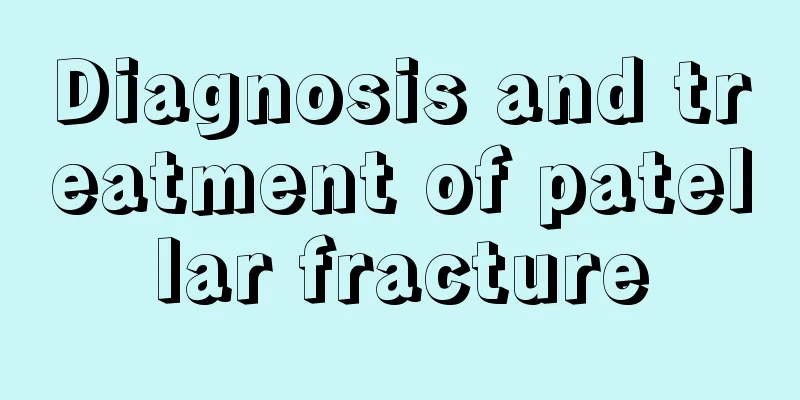Diagnosis and treatment of patellar fracture

|
Patellar fracture is a common injury, with local swelling and pain of the patella, inability to straighten the knee joint independently, often with subcutaneous bruises and knee skin abrasions as the main manifestations. I believe everyone knows the importance of bones to us. So how do we diagnose and treat patella fractures? Let’s take a look at it together below. Clinical manifestations The age of patellar fracture is generally between 20 and 50 years old, with more males than females, about 2:1. After a patellar fracture, a large amount of blood accumulates in the joint, causing subcutaneous congestion and swelling in front of the patella. In severe cases, blisters may form on the skin. There is severe pain in the knee joint during activity, and sometimes a feeling of bone friction can be felt. In displaced fractures, a gap between the fracture lines can be felt. examine Imaging findings: A transverse or star-shaped X-ray-lucent fracture line can be seen in the patella. Due to the involvement of the quadriceps tendon and patellar tendon, the fracture fragments are often separated significantly, and the upper part of the fracture is displaced upward, while the lower part is not displaced. If the quadriceps tendon is not completely ruptured, fracture displacement is less common. diagnosis Patellar anteroposterior and lateral X-rays can confirm the diagnosis. For suspected longitudinal or marginal fractures of the patella, an axial radiograph must be taken for confirmation. treat The treatment of patellar fracture should restore the smoothness of the articular surface to the greatest extent possible, provide firmer internal fixation, mobilize the knee joint early, and prevent the occurrence of traumatic arthritis. 1. Non-surgical treatment Plaster splint or tube fixation is suitable for non-displaced patellar fractures. No manual reduction is required. The blood in the joint is drained and bandaged. The affected limb is fixed in an extended position for 3 to 4 weeks with a long-leg plaster splint or tube. Practice quadriceps contraction during the cast period, and practice knee flexion and extension after the cast is removed. 2. Surgery Patellar fractures with more than 2 to 3 mm displacement, articular surface unevenness of more than 2 mm, and combined extensor retinaculum tear fractures are best treated with surgery. In the article, we have learned in detail about the diagnosis and treatment of patellar fractures. I believe everyone is already clear about it. We all know that fractures are painful and recovery is slow, so everyone should be careful not to get injured during daily exercise. |
<<: Prevention and treatment of leprosy deformity
>>: Pathological changes of rectal tubular adenoma
Recommend
Mid-term symptoms of endometrial cancer
Why are there so many diseases that harm women in...
The truth behind how herpes simplex is caused is this
Herpes simplex has always attracted people's ...
What causes lymphoma and how is it checked?
For many people today, lymphoma requires a lot of...
The difference between warts and corns
Corns are a type of disease that grows on the fee...
Shelf life of sweet potato vermicelli
Any food has a shelf life. Eating it after the ex...
Reasons for frequent yawning
We have all yawned in our daily lives. In everyon...
What to do if the bridge of nose is crooked
The bridge of the nose is an important part of th...
Can stroke be cured? Chinese medicine is effective
There are many signs before a stroke, such as slu...
Is it good or bad if acne scars turn from red to black
Acne scars are a type of tissue that exists in th...
Are radiation protection suits effective?
Anti-radiation clothing is a less common clothing...
What causes the mouth
Mouth numbness is a common condition in life. For...
How to melt rock sugar
Depending on the purity of the rock sugar, there ...
Healthy sleep knowledge
People are very familiar with sleep. Sleep is the...
Do you need to apply primer before applying sunscreen? Here’s how to use it correctly
If women want their skin to be whiter, they shoul...
What are the most common symptoms of colon cancer
There are many types of intestinal cancer, and co...









